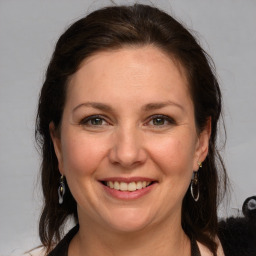This assessment will cover the following questions:
- What are the other health conditions that are related to diabetes which may lead to other health issues.
- Provide the aetiology conditions of patient along with her health history.
- Generate the nursing practice standards which is required in developing quality assurance procedures.
INTRODUCTION
Nursing practice is a practice which involves the advocacy for the rights of an individuals patient or for their family. The nurses are present in each community either it is large or small. They provide the expert care from the birth to the life ends. As the nurses role in broad range as it provide direct care to the patient and case management to establishing the nursing practice standards, they develop quality assurance procedures as well as have a responsibility to direct the complex nursing care system. Diabetes is a conditions in which an individuals blood glucose level risen up due to insufficient insulin within the body. This essay report cover the aetiology conditions of Aamira's along with her health history.
MAIN BODY
Aetiology is the branch of medical science which study the causes as well as the origin of diseases. In case of Aamira's, the main causes of the diabetes at her age is because of her post medical history. As Aamira's has experienced hypertension, post traumatic stress disorder as well as she was a chain smoker as she consumed one pack of cigarette within a weak. As diabetes is a chronic health conditions which causes a high blood sugar levels. In this most of the body food is break down into the sugar and releases it into the bloodstream. In this the blood sugar may goes up which give signal to the pancreas to release the insulin (Reymond & et.al., (2018)).
As the exact root cause of most type of diabetes is still unknown. But in all cases, it has been found that the sugar builds up within the bloodstream which causes the pancreas to not produce enough insulin. It is considered that the diabetes is caused by a combination of genetic as well as environmental factors. Some of the symptoms of diabetes may includes urinate a lot often at night, thirsty, hungry, blurry vision, feel tired all the time, have dry skin as well as tingling in hands or in feet. As the hypertension and the diabetes are the most common co morbidities. As diabetes is more frequent in patients having hypertension as compared to those who do not have hypertension. Because patient having hypertension may often exhibit insulin resistance do to which those patient are greater risk of diabetes than a normotensive individuals. These same situation is happen to Aamira's case as she had experience of hypertension. Moreover, the post traumatic stress disorder is also associated with the increased risk of diabetes this condition is also similar to Aamira's case. Hence, these are conditions which relate the main root cause of diabetes in Aamira's (Iavarone & et.al., (2020)).
On the admissions of new patients the nurse have a duty to come to the room of the newly admitted patient in order to perform a complete head-to-toe assessment. They also have a duty to gather an important contact information, review or document the patient's medication list as well as have to pertinent the medical history. They also have a duty to orient the patient to their room as well as to their unit. So when the Aamira's admitted to the medical ward after the assessment or recommended by the general practitioner. She need a further assessment or investigation after she diagnosed a diabetes by the general practitioner. So as a nurse, it is assigned to check the whole history of the patient whose name is Aamira's. Hence nurses followed a systematic guide to the client centered care with the sequential steps such as assessment, diagnosis, planning, implementation as well as evaluation (Huang & et.al., (2021)).
In case of Aamira's assessment the first process involves the critical thinking skills as well as the data collection. It may be subjective or objective. The subjective data involves verbal statements from the patient or care givers. So in case of Aamira's the nurse take a verbal information from the Aamira's niece on call as she lives in Melbourne as she visited to Aamira's three times a year. So her neice explained that her aunt has experience hypertension and she had a habbit of smoking as she consumed a pack of 20 cigarette within a weak. So from her niece it has been recognised that Aamira's hypertension or smoking habit which is documented on the note chart of Aamira's case. The other step include diagnosis as after clinical judgment assists as per NANDA the north Australian nursing diagnosis association. It is a clinical process about the responses to the actual or potential health problem. In case of Aamira's conditions, a blood test, examination, SpO2 examination, ECG, blood pressure and many other diagnosis are performed (Chen & et.al., (2021)).
As the nursing diagnosis may encompasses a Maslow's Hierarchy of needs as well as helps according to that they prioritize or plan the care which is based on the patient centred outcomes. Hence, after the diagnosis of the Aamira's health conditions the nurse start to jump on the planning stage as it is the stage where the nurse may goals or outcomes are formulated which may directly impact the patient care which is based mainly on the EDP guidelines. As this is patient specific goals or the attainment as it assist in ensuring the positive outcomes. After recognise the problem as a nurse, it should be advice to Aamira's to stop smoking and eat healthy diet as per diet chart. After that some strict medication control implemented to improve the health of Aamira's. While implementing the proper effective manner in case of Aamira's conditions, the possible outcomes is achieved as, Aamira's stop smoking, she start following healthy diet chart, she take her medication as per the schedule time as well (Wong., (2018)).
Worried about assignment help? Take our experts help!
As a health care nurse have a duty to educate the patient about their health condition. Therefore, in case of Aamira's the nurse provides a basic information about the diabetes as Aamira's admitted to medical ward as she diagnosed with diabetes. So as a nurse provide a brief knnoweledge about the diabetes to the Aamira's. As in diabetes the blood sugar level rises up. It is the responsibility of a pancreases to make insulin. As the food converts into glucose and get absorbed within the body and used as energy. But due to wrong lifestyle as well as food habit cause amyloid to accumulate within the pancreas which blocks their functions. Hence it finally the main reason to rises the blood sugar level within the body. The other things to educate Aamira's is understand the use of diabetes device including blood glucose meters, insulin pen, insulin pumps as well as continuous glucose monitors. As insulin pump is a small device which have a ability to deliver the insulin continuously as well as quickly for carbohydrate intake (Englander & et.al., (2019)).
There are variety of insulin pump are available within the marketplace which offering an option to meet the individual's requirement or needs. As pump can improve blood glucose control but it is need to check continuously a glucose levels by using a continuous glucose monitor as well as by using glucose meter. As insulin pump not cure the diabetes as it only continuously delivers the insulin as its goals is to manage the blood glucose levels and to avoid wide fluctuation or to prevent severe hypoglycaemia. As health care nurse the other things a Aamira's advice about to adopt the healthy eating habits which include meal planning, weight-loss strategies and the other disease-specific nutrition. As diet play a very significant role in order to maintain the symptoms as well as the overall health of the patient. As diabetes can be well managed by eating healthy foods and fruit along with doing regular physical activity as well as weight management. Hence it has been advice to Aamira's to eat plenty of vegetables as well as legumes such as chickpeas, lentils, low-salted baked beans as well as kidney beans on regular basis and keep little physical activity as well. As during Ramadan is a holy month, in which Muslims all over the world are observe fast each day of a month till before sunset. They not eat or drink anything for 14-15 hours a day and it is also called as intermittent fasting. But in case of diabetic people, it may rise a little concerned as it impacts the blood glucose level of an individuals. Hence, as a health-care nurse it is advice to Aamira's to adopt some different method during the Ramadan such as time restricted feeding, as it is the most popular plan which allows the follower to fast for 16 hour straight and eat the food during the 8-hour period, the other method is alternate day fasting, in this Aamira's need to fast on alternate days as on the fasting day they can have no minimal calories whereas on the feasting day she can eat as much she want. The other method are advice to Aamira's is periodic fasting, this method involves eat stop eat formula. As in this Aamira's allowed to eat for 5 days in a week but has to limit their calorie intake up to 500 calories for 2 days, which should not to be back to back. As in this pattern, Aamira's should eat responsibly on their non-fasting days and she should not have to feast days (Reardon & et.al., (2020)).
Read more: NURS 1004 Nursing theories and models Virginia Henderson's theory
The education provided to the Aamira's discharge in term to reduce the complications as well as to reduce the readmission. As education is provided to the Aamira's on diabetes self- management- she has to recognised the healthcare provider as who will provide the diabetes care after the discharge. She should have effective knowledge and understanding associated with diabetes diagnosis or medication and self monitoring of blood glucose as well. As self monitoring is a approach where individuals with diabetes measures their blood glucose levels themselves by using glycemic reader (Galindo & et.al., (2020)).
Aamira's should have to know the sign and symptoms, their treatment as well as prevention of the hyperglycaemia and hypoglycaemia. Apart from this she have to address the proper information about her consistent eating pattern to her healthcare provider. As a nurse, it has to be informed the Aamira's as when or how to take the blood glucose lowering medication. It has also informed the medication administration method to Aamira's. Some instruction is also provided to Aamira for diabetes management in her sick days as what she have to prevent during her sick days. Instruction related to the proper use as well as disposal of needles and syringes are provided to the Aamira's in case of her home return. In case of Aamira's discharge some appropriate durable medical equipment, medication supplies as well as the prescription are provided to the Aamira's which she should have to be maintained at home care such as insulin, syringes or pen needles, oral medication, blood glucose meter or strips, lancing devices, urine ketones strips, glucagon emergency kit as well as the medical alert application (Mandel & et.al., (2019)).
Looking for essay help ? Take our experts help Now!
CONCLUSION
From the above discussion, it has been concluded that diabetes is a conditions in which the blood sugar level is risen up as because pancreas unable to insulin due to accumulation of amyloid within the pancreas. It has been also concluded that the some health conditions are related to the diabetes and it may be the reason of other health issues such as hypertension, smoking addiction, post traumatic stress disorder, osteoporosis and many other.
REFERENCES
Books and Journals:
- Chen, S., Zhao, S., Dalman, C., Karlsson, H., & Gardner, R. (2021). Association of maternal diabetes with neurodevelopmental disorders: autism spectrum disorders, attention-deficit/hyperactivity disorder and intellectual disability. International journal of epidemiology, 50(2), 459-474.
- Englander, H., Dobbertin, K., Lind, B. K., Nicolaidis, C., Graven, P., Dorfman, C., & Korthuis, P. T. (2019). Inpatient addiction medicine consultation and post-hospital substance use disorder treatment engagement: a propensity-matched analysis. Journal of general internal medicine, 34(12), 2796-2803.
- Galindo, R. J., Umpierrez, G. E., Rushakoff, R. J., Basu, A., Lohnes, S., Nichols, J. H., ... & Klonoff, D. C. (2020). Continuous glucose monitors and automated insulin dosing systems in the hospital consensus guideline. Journal of diabetes science and technology, 14(6), 1035-1064.
- Huang, B., Huang, Z., Tan, J., Xu, H., Deng, K., Cheng, J., ... & Gao, Y. (2021). The mediating and interacting role of physical activity and sedentary behavior between diabetes and depression in people with obesity in United States. Journal of Diabetes and its Complications, 35(1), 107764.
- Iavarone, M., D'Ambrosio, R., Soria, A., Triolo, M., Pugliese, N., Del Poggio, P., ... & Lampertico, P. (2020). High rates of 30-day mortality in patients with cirrhosis and COVID-19. Journal of hepatology, 73(5), 1063-1071.
- Mandel, S. R., Langan, S., Mathioudakis, N. N., Sidhaye, A. R., Bashura, H., Bie, J. Y., ... & Zilbermint, M. (2019). Retrospective study of inpatient diabetes management service, length of stay and 30-day readmission rate of patients with diabetes at a community hospital. Journal of community hospital internal medicine perspectives, 9(2), 64-73.
- Mullan, L., Wynter, K., Driscoll, A., & Rasmussen, B. (2020). Preventative and early intervention diabetes-related foot care practices in primary care. Australian journal of primary health, 26(2), 161-172.
- Ottosson, F., Smith, E., Gallo, W., Fernandez, C., & Melander, O. (2019). Purine metabolites and carnitine biosynthesis intermediates are biomarkers for incident type 2 diabetes. The Journal of Clinical Endocrinology & Metabolism, 104(10), 4921-4930.
- Reardon, R., Simring, D., Kim, B., Mortensen, J., Williams, D., & Leslie, A. (2020). The diabetic foot ulcer. Australian Journal of General Practice, 49(5), 250-255.
- Reymond, L., Parker, G., Gilles, L., & Cooper, K. (2018). Home-based palliative care. Australian journal of general practice, 47(11), 747-752.
- Wong, F. K. Y. (2018). Development of advanced nursing practice in China: act local and think global. International journal of nursing sciences, 5(2), 101-104.




















